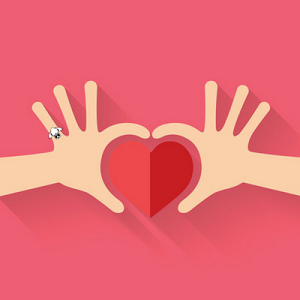Claddagh Ring Positions
The Claddagh ring has represented love, loyalty, and friendship since the 17th century. Since then, it has become a well-known symbol that's spread far beyond Ireland, making it one of the better known Celtic ring designs.
The clasped hand design actually belongs to a group of rings called fede which originated thousands of years ago and gained popularity in Europe because of their close association with loyalty and marriage.
Fede rings eventually evolved into what you see here: two hands holding a crown-topped heart. This design offers the wearer a unique opportunity since the heart can point either inward or outward. And because it can be worn on either ring finger, the position of a Claddagh ring always denotes one of four romantic intentions.
|
1. Left Hand Outward
|
Rings on the left hand traditionally denote marriage or engagement. In this case, when the ring is worn on the left ring finger with the heart facing outward, the wearer is indicating that she is engaged. |
|
2. Left Hand Inward
|
Claddagh rings worn on the left hand with the heart facing inward mean that the wearer is married. |
|
3. Right Hand Outward
|
When worn on the right hand with the heart facing outward, the Claddagh ring indicates that the person's heart is still open. Wear your ring in this position if you are single. |
|
4. Right Hand Inward
|
A Claddagh ring worn on the right hand with the heart facing inward conveys that the wearer's heart is closed. Wear your ring in this position if you are in a relationship. |





